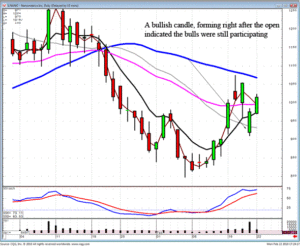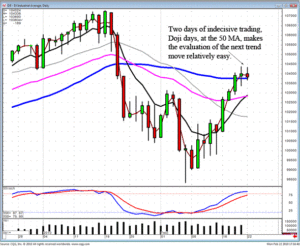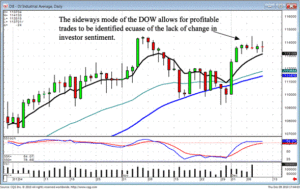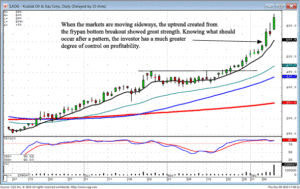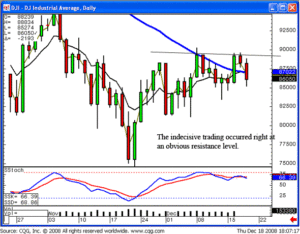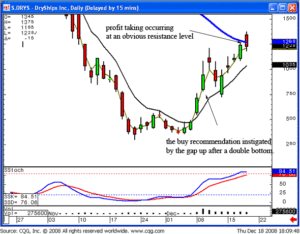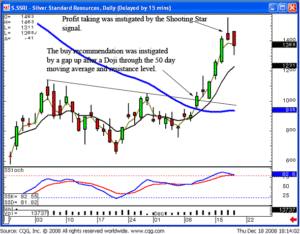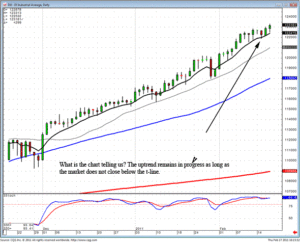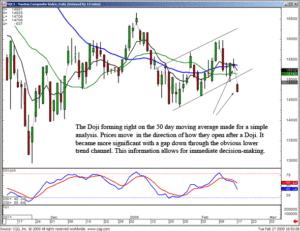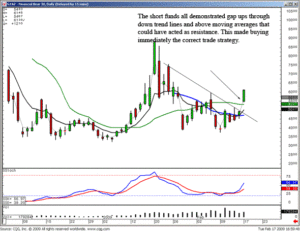Since stocks have a greater tendency to retrace, rather than move in a straight direction, traders use the Fibonacci Indicators as reference points to predict a retracement versus a reversal. Extremely accurate when analyzing chart pattern reversals. Fibonacci indicators also provide an excellent visual map. Combined with Candlestick Signals, the savvy trader can find optimum entry and exit points.
An effective Candlestick trading tactic is to look for small double bottoms or double tops within these lines to identify trading opportunities. Congestion can form around the 38% and 62% levels, so watching for Candlestick Breakout signals at these levels can forewarn of significant price moves. Just like moving averages, the Fibonacci indicators work like price magnets to old highs or lows. For an even greater degree of accuracy they should be combined with the major japanese candlestick patterns.
Most common numbers used in technical analysis for drawing Fibonacci lines are 62% (61.8% rounded up), 38% and 50%. For existing trends, the 38% level should be the minimum retracement but can go down as low as the 62% level. As price retraces, support and resistance occurs at a high rate near the Fibonacci levels. In an existing rising trend, the retracement lines descend from 100% to 0%. In an existing downtrend, the retracement lines ascend from 0% to 100%.
Technical Analysts use these Fibonacci Indicators (Fib-lines) to predict Price Targets and Support/Resistance Targets. To accurately draw the lines to identify these patterns you begin drawing from the lowest point (which equals your 0 percent line) to the highest point (which equals your 100% line). The 38%, 50%, and 62% lines will provide your reference point for targets.
While nothing can predict the future with 100% accuracy, adding these to your technical analysis tools greatly enhances your ability to be in profitable trades. Adding the candlestick signals provide a huge advantage for being able to immediately recognize what is going on in investor sentiment at these levels. Don’t force the picture; should you come across a chart where the Fib-lines conflict with your other technical indicators (such as moving averages), move on to another chart. There will be plenty of charts providing greater confirmation when all your technical indicators are in agreement. (More about our newly released 30-minute training tutorial Fibonacci Trading Techniques)
